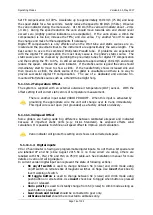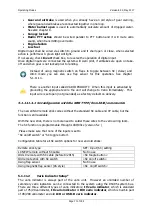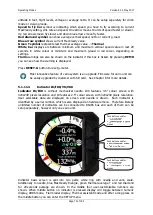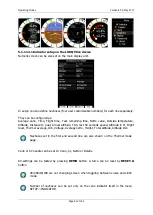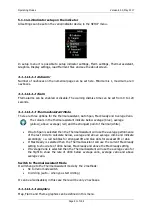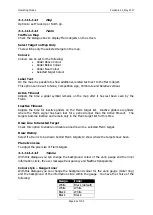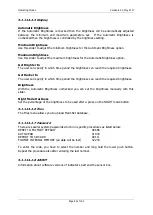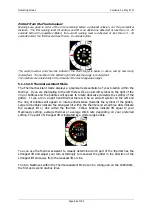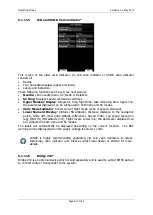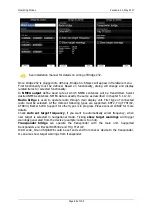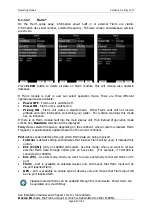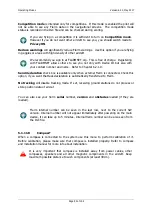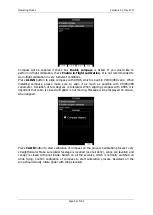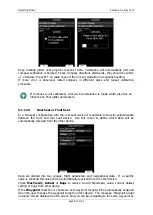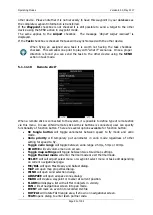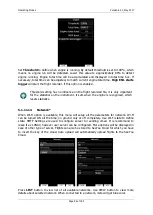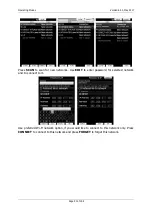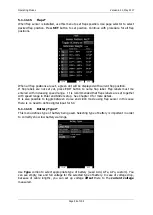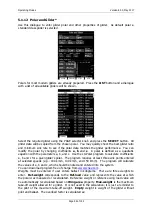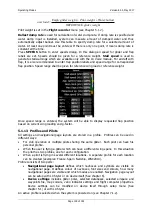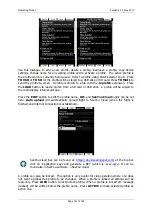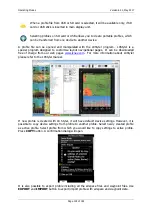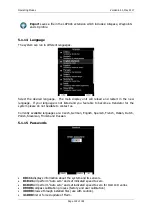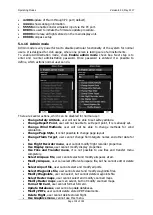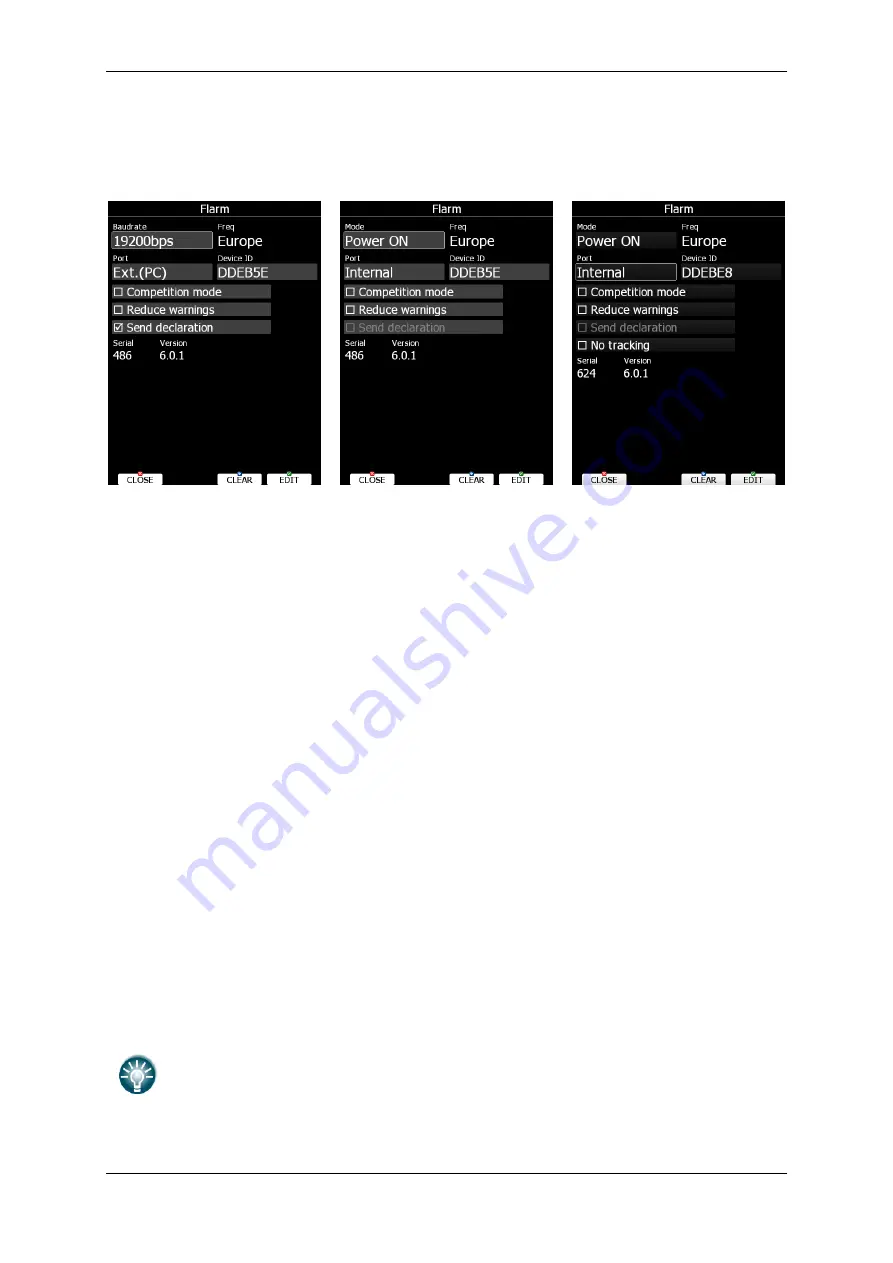
Operating Modes
Version 6.03, May 2017
Page 89 of 192
5.1.11.7
Flarm*
On the Flarm setup page, information about built in or external Flarm are visible.
Information like serial number, selected frequency, firmware version and database versions
are shown.
Press
CLEAR
button to delete all data on Flarm module. This will remove also obstacle
database.
If Flarm module is built in user can select operation mode. There are three different
operational modes available:
Power OFF
- Flarm unit is switched off.
Power ON
- Flarm unit is switched on.
Privacy ON
- Flarm unit works in stealth mode. Other Flarm units will not receive
altitude and vario information concerning your glider. For collision warnings this mode
has no influence.
If there is no Flarm module built into the main display unit, then instead of operation mode
combo box,
Baudrate
selection will be displayed
Freq
shows selected frequency depending on the continent, where system is located. Flarm
Frequency is automatically updated based on the current continent.
Port
defines serial interface through which Flarm data are being received.
Internal
is default setting and indicates that internal Flarm will be used, if installed this
option.
Ext. (Colibri)
(only on LX8000 old model)– Use this mode, when you want to receive
external Flarm data through Colibri port on back side. (For example, if TRX1090 is
connected to LX8000.)
Ext. (PC)
– Use this mode, when you want to receive externally connected Flarm on PC
port
Flarm
– port is available on selected devices only and means that Flarm input will be
via port labelled Flarm.
GPS
– port is available on simple type of devices only and means that Flarm input will
be via port labelled GPS.
Classical external flarm can be updated through the main device. Power flarm can
be updated only via USB key.
See installation manual and Chapter 10.1 for more details.
Device ID
shows the Flarm unique ID, which is transmitted to other FLARMs.


